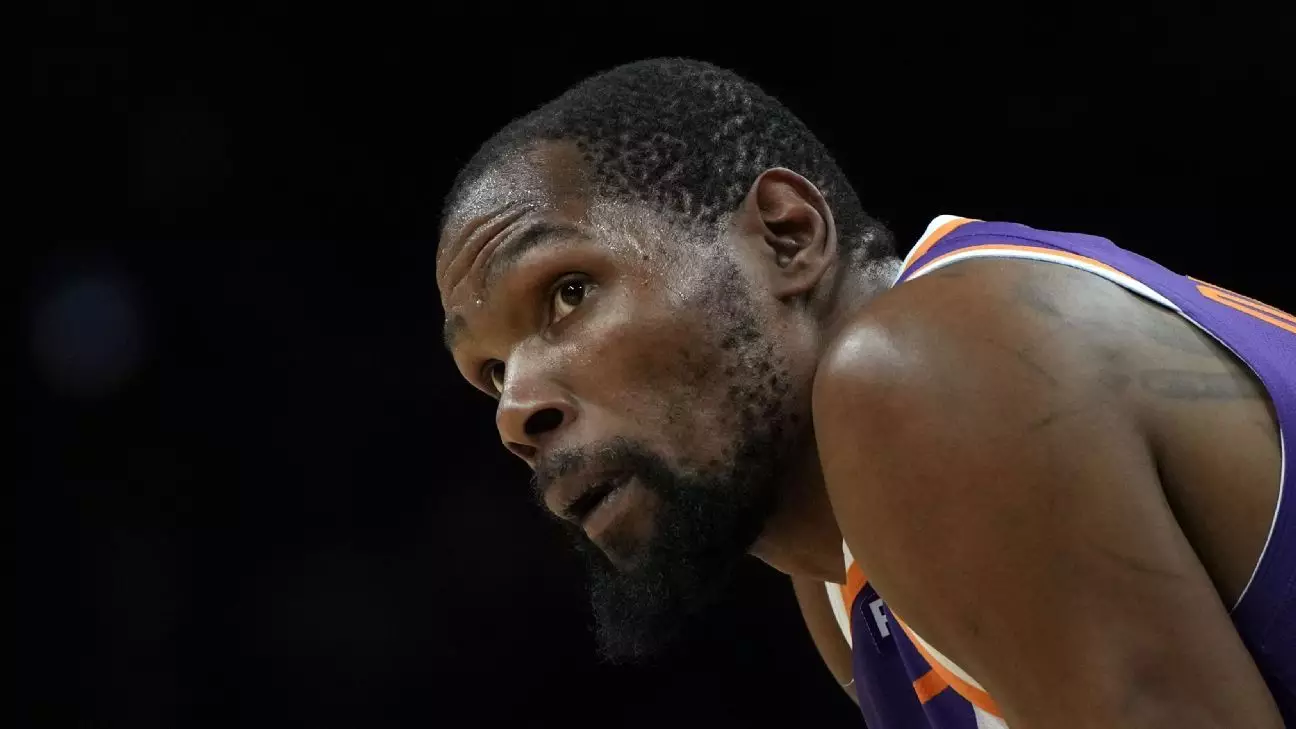The recent NBA multi-team blockbuster trade, involving seven franchises and a staggering array of assets, is more than just a headline—it signals a seismic shift in the league’s dynamics. While the league often touts these as strategic moves aimed at strengthening teams or rewarding loyalty, the reality is more complex and arguably more troubling. It exposes the fragility of team-building, the commodification of star players, and the league’s increasingly chaotic approach to managing talent and assets. The entire deal, which reconfigured the futures of Kevin Durant, multiple draft picks, and several prominent players, exemplifies a league that in its pursuit of spectacle has sacrificed stability and strategic planning.
This intricate web of transactions, culminating only when the NBA opened its tax-free floodgates post-moratorium, exposes the league’s obsession with maintaining the illusion of constant movement. The sheer number of assets exchanged—players, picks, cash considerations—highlights an environment where futures are hostage to immediate gains. Unlike traditional team-building strategies rooted in patience and cohesion, today’s NBA leans heavily on short-term wins driven by high-profile trades that often overlook long-term continuity. The result is a fractured competitive landscape that favors flashes of brilliance over steady, sustainable growth.
The False Promise of Star Power and Superteams
Kevin Durant’s trade epitomizes the league’s flirtation with star-centric chaos. Once seen as an icon of consistent excellence, Durant’s movement from Phoenix to Houston underscores how even generational talents are now pawns in a broader game of leverage. The deal’s scale—spanning multiple teams and involving various draft assets—is a testament to how the NBA increasingly values star power as a bargaining chip rather than treating it as a product of organic team development.
Yet, this strategy is inherently flawed. Superteams, assembled through complex transactions like this, often produce fleeting success rather than enduring legacies. The NBA’s recent history is littered with these experiments—Miami’s “Big Three,” Golden State’s explosiveness with Durant, Brooklyn’s star-studded roster—that ultimately falter under the weight of astronomical salaries, locker room friction, and the pressure of instant championship expectations. There is a cynical undercurrent here: the league seems more intent on spectacle than genuine competitiveness.
The Price of Complexity and the Erosion of Authenticity
As deals explode in size and complexity, the league risks losing sight of what makes basketball compelling: teamwork, loyalty, and strategic growth. Instead, we’re witnessing a landscape where teams become transactional hubs, channels for asset redistribution with little regard for building chemistry or fostering identity. The NBA’s penchant for creating “super teams” through blockbuster trades not only diminishes the importance of drafting and developing young talent but also fosters a culture where players are viewed more as commodities than colleagues.
Furthermore, the league’s financial mechanics—draft picks, second-round swaps, cash considerations—may serve owners’ interests but do little to promote a genuine competitive balance. The delicate balance between rebuilding and contending is increasingly blurred, creating a strange spectacle where a team’s future can be swapped in a single transaction like a card game. This erodes the authenticity of the league, transforming it into an ever-shifting mosaic of franchises chasing the next shiny star rather than nurturing their own.
A League at a Crossroads: Stability or Spectacle?
The ongoing trend raises uncomfortable questions about the NBA’s future. Is the league prioritizing entertainment at the expense of integrity? As franchises scramble for short-term relevance, the essence of the sport—team cohesion, strategic planning, and community roots—gets muddled in a sea of financial engineering and blockbuster hype. The NBA might be vigilant about its global reach and economic growth, but it risks losing its soul in the process.
This multi-team trade, while dazzling on the surface, could foreshadow a more disjointed future where stability is sacrificed for spectacle. It questions whether the league truly values competition or simply panders to the spectacle-driven culture of modern sports entertainment. The interconnected web of deals, involving players, picks, and cash, demonstrates a league increasingly obsessed with transactionality rather than the timeless virtues of teamwork, loyalty, and strategic patience.
In the end, whether this whirlwind of trades heralds a new era of innovation or signals deeper problems remains to be seen. But one thing is clear: the NBA’s current trajectory risks sacrificing its core principles at the altar of instant gratification.


Leave a Reply